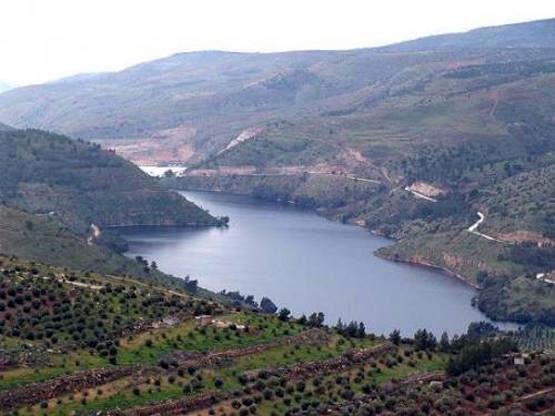You are here
Winter solstice passes, ‘coldest days’ ahead — JMD
By Hana Namrouqa - Dec 22,2018 - Last updated at Dec 23,2018

Saturday marked the winter solstice in the northern hemisphere and marbaniyeh, Jordan’s 40 coldest days of winter (Photo by Osama Aqarbeh)
AMMAN — Saturday marked the winter solstice in the northern hemisphere and the start of marbaniyeh in Jordan, the 40 coldest days of winter, according to the Jordan Meteorological Department (JMD).
Saturday was the shortest day and longest night of the year, according to meteorologist Raed Rafed, who noted that astronomically, autumn ended and winter began in the northern hemisphere.
“In Jordan, the first day of winter is associated with the first day of marbaniyeh — a local name referring to the 40 coldest days of the year, during which very cold fronts, many of which are of polar origin, affect the country, bringing heavy rain, and sometimes snow,” Rafed, who heads the JMD’s weather forecasting section, told The Jordan Times on Saturday.
The days will now slowly start to become longer and the nights shorter, until they reach equilibrium on March 20, which is the spring equinox in the northern hemisphere, according to JMD.
“During marbaniyeh, average temperatures in the capital range between a maximum of 12.7ºC and a minimum of 3.8ºC,” Rafed noted.
Multiple depressions, very cold weather and cold and dry easterly winds usually accompany marbaniyeh, as well as frost spells, which take hold due to the around-zero temperatures and chilly winds, according to JMD.
The Kingdom usually gets 30 per cent of its average annual rainfall of 8.3 billion cubic metres during marbaniyeh, according to Rafed, who noted that it ends on January 30.
Marbaniyeh’s first depression is forecast to affect the country on Wednesday, and Rafed said that the depression’s “behaviour” will be similar to that which prevailed over the past week, when heavy rain and strong winds prevailed in different parts of the country.
“There will be a depression on Wednesday that will end on Friday," Rafed said.
The meteorologist urged the public to stay abreast of the JMD’s constant weather updates.
Wet season
performance
Meanwhile, Minister of Water and Irrigation Raed Abul Saud said on Saturday in a statement e-mailed to the Jordan Times that the dams are now holding a third of their total capacity.
Rainfall over the past week channelled 5 million cubic metres (mcm) of water into the country’s dams, raising storage levels to 101mcm. The dams now hold 30 per cent of their total capacity of 336mcm, according to Abul Saud.
“The wet season got off to a good start as rain arrived early. This could be a good rainy season if the precipitation pattern remains the same,” Abul Saud said in the statement.
Studies and seasonal weather charts show that this wet season is forecast to bring above average rainfall across the Mediterranean region.
“It is projected, according to data announced during a recent conference for meteorologists from the Mediterranean region, that rain during this wet season will be 60 per cent above the annual average,” Rafed underscored.
Related Articles
AMMAN — As Thursday marks the winter solstice and the start of marbaniyeh in Jordan, temperatures will be eight degrees above their annual a
AMMAN — The country's 15 major dams now hold third of their total storage capacity of 336.4 million cubic metres (mcm), Water Ministry offic
Monday marks the winter solstice in the northern hemisphere and the start of marbaniyeh in Jordan — the 40 coldest days of winter, the Jordan Meteorological Department (JMD) said on Saturday.
















